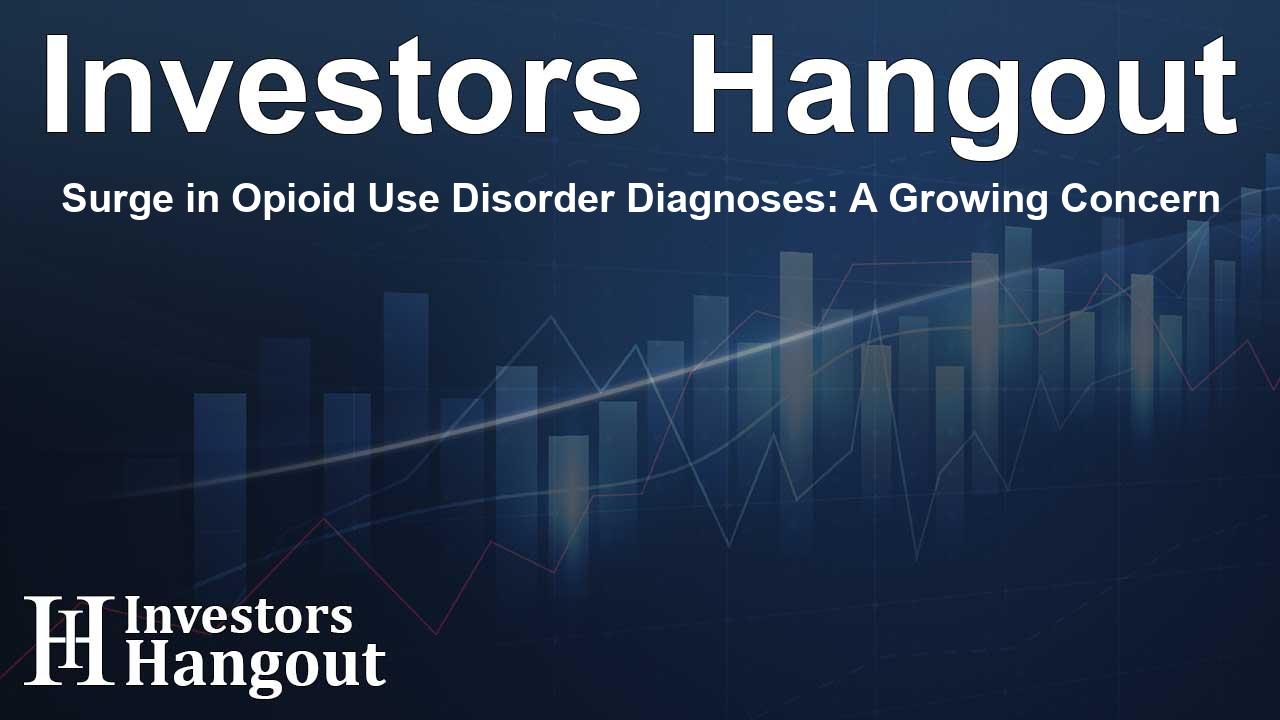Surge in Opioid Use Disorder Diagnoses: A Growing Concern

Significant Increase in Opioid Use Disorder Cases
According to the latest report from FAIR Health, there has been a remarkable increase in patients diagnosed with opioid use disorder (OUD) over recent years. This trend has raised significant concerns as the numbers illustrate a growing public health issue. The data indicates that in 2021, there were approximately 386 cases of OUD diagnoses for every 100,000 patients under commercial insurance. By 2024, that figure has surged to 539 per 100,000, indicating an overall rise of almost 40 percent. This statistic paints a stark picture reflecting the escalating opioid crisis.
Understanding the Opioid Tracker
The FAIR Health Opioid Tracker, an innovative interactive tool, provides comprehensive insights into opioid use disorder across the nation and by individual states. This tool not only tracks the prevalence of OUD but also offers valuable data that can inform treatment and policy decisions. The heat map feature allows users to click on individual states to reveal important information on OUD, including procedure codes, age and gender distribution, and usage trends across different healthcare services.
Key Insights from the Recent Data
Among the most significant findings revealed by the Opioid Tracker, Tennessee stands out as the state with the highest rate of patients undergoing treatment for opioid use disorder, boasting 1,447 cases per 100,000 insured residents. It was closely followed by states like West Virginia and Kentucky, all indicating troubling trends in opioid use.
State-by-State Breakdown and National Trends
The data highlights that nationally, in 2024, services related to alcohol and substance abuse treatments constituted the most frequently used category of healthcare services for opioid use disorder among commercially insured patients, making up nearly 40 percent of claims. Moreover, the most frequently used procedure code was linked to short-term residential treatment programs that provide behavioral health support.
The Demographics of Opioid Use Disorder
Age demographics revealed that those in the 31 to 40 age group represent the largest percentage of opioid use disorder cases at 26.8 percent, showcasing a critical age range that could benefit from targeted interventions and awareness programs. A gender disparity was also evident, with males accounting for over half of the reported cases.
Growth in Treatment Specialties
The increase in opioid use disorder cases has also led to an expansion in the types of healthcare professionals involved in treatment. Notably, nurse practitioners saw a significant rise of 102 percent in their involvement in treating OUD cases between 2021 and 2024. This shift indicates a changing landscape in treatment approaches and the demand for diverse healthcare providers in managing the opioid crisis.
FAIR Health's Commitment to Opioid Research
FAIR Health's mission extends far beyond mere data collection; the organization aims to empower patients and healthcare systems with actionable insights. By providing a resource that is both free and accessible, FAIR Health encourages communities to confront and address the challenges posed by opioid addiction.
What the Future Holds
As awareness around opioid use disorder grows, it is critical for healthcare systems, policymakers, and communities to collaborate on creating effective strategies to combat this epidemic. The data from FAIR Health underscores the urgent need for not only treatment but also prevention measures to help curb the increase in opioid-related cases in the coming years.
Frequently Asked Questions
What is the Opioid Tracker?
The Opioid Tracker by FAIR Health is an interactive tool that provides insights into opioid use disorder diagnoses across the U.S., helping to track trends and treatment data.
How much did diagnoses increase?
From 2021 to 2024, opioid use disorder diagnoses increased by nearly 40%, reflecting a growing public health concern.
Which state has the highest rate of OUD?
Tennessee has the highest rate of commercially insured patients treated for opioid use disorder at 1,447 per 100,000 patients as of 2024.
What demographic is most affected by OUD?
The age group most affected by opioid use disorder is individuals aged 31 to 40, accounting for 26.8% of cases in 2024.
How can the Opioid Tracker benefit communities?
The Opioid Tracker provides vital data that can guide treatment decisions, inform policy, and ultimately help in addressing the opioid crisis at various community levels.
About The Author
Contact Logan Wright privately here. Or send an email with ATTN: Logan Wright as the subject to contact@investorshangout.com.
About Investors Hangout
Investors Hangout is a leading online stock forum for financial discussion and learning, offering a wide range of free tools and resources. It draws in traders of all levels, who exchange market knowledge, investigate trading tactics, and keep an eye on industry developments in real time. Featuring financial articles, stock message boards, quotes, charts, company profiles, and live news updates. Through cooperative learning and a wealth of informational resources, it helps users from novices creating their first portfolios to experts honing their techniques. Join Investors Hangout today: https://investorshangout.com/
The content of this article is based on factual, publicly available information and does not represent legal, financial, or investment advice. Investors Hangout does not offer financial advice, and the author is not a licensed financial advisor. Consult a qualified advisor before making any financial or investment decisions based on this article. This article should not be considered advice to purchase, sell, or hold any securities or other investments. If any of the material provided here is inaccurate, please contact us for corrections.
